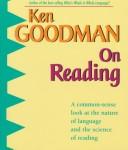
The author crafts a text … . But it isn’t that text that the reader is making sense of. The reader constructs his or her own text, parallel to the published text, while transacting with it.
During the transaction, the author’s text is transformed into the text the reader makes sense of … . The reader’s text is located only in the reader’s head! The reading process focusses on this parallel, personally constructed reader text; perception is governed by, and syntax is assigned on the basis of, that text. Both structure and meaning are constructed by the reader, and if something goes wrong, then the text in the reader’s head must be reconstructed to be sensible. Reader miscues and self-corrections exhibit this process of construction and reconstruction. Readers are striving to understand what the author is trying to say, but the meaning they are building is their own.
A few key ideas can serve as schemas to guide us as we probe the subtleties of this constructive reading process:
- Reading is an active process in which readers use powerful strategies in their pursuit of meaning.
- Everything readers do is part of their attempt to make sense.
- Readers become highly efficient in using just enough of the available information to accomplish their purpose of making sense.
- What readers bring to any act of reading is as important for successful reading as anything they use from the published text. …
Proficient reading is both effective and efficient. It’s effective in that the reader is able to make sense; it’s efficient in that this is accomplished with the least amount of time, effort and energy. An efficient reader uses only enough information from the published text to be effective.
Nothing in this definition says that the sense all readers make of any given text will be the same. No matter how proficient, a reader’s comprehension is always dependent on what he or she brings to the reading in terms of knowledge, experience, interest and values. I’m not saying that anything goes. The meanings constructed by proficient readers will always relate to the published text, but they’ll be highly personal at the same time. There is a transaction between the reader and the published text and, through it, with the writer. Both writers and readers strive to understand and be understood. How well they succeed depends on what each brings to the transaction and how well they use the process.
Efficient reading tends to be relatively fast. In fact, most of us read (make sense of print) much faster than we listen (make sense of speech), for the simple reason that we can comprehend speech only at the rate it’s presented to us, while in reading we choose our own speed. And even average readers read much more rapidly than they listen. Speed is a result of efficiency, not a cause.
Efficiency also produces what some people call fluency. Those who believe comprehension depends on rapid, accurate word recognition define fluency as exactly that. But reading that requires accurate word recognition is very inefficient, since it limits the use of cues to identifying words and distracts us from the necessary focus on meaning — in other words, it’s ineffective. We can read fast precisely because we don’t have to recognize every word.
Goodman, Ken. 1996. Ken Goodman on Reading. Portsmouth NH: Heinemann, pp.90-92. || Amazon || Worldcat
